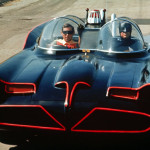One of the most famous car ads of all time was the 1987 Michelin tire ad: Because so much is riding on your tires. It reminded motorists that while cars may have thousands of parts needed to keep them running, only four wheels are responsible for keeping a car safely on the ground. Featuring a baby in the ad, it also made the connection between car safety and family safely - this meant that tires are responsible for family safety and you can only trust Michelin to keep your family safe. It’s not hard to see thousands of American families switching to Michelin after that.
Nearly thirty years later, motorists are still principally concerned with safety when they get into a car. What has changed is that it would have been almost unthinkable for four strangers to get into a car together and take a long drive along a lonely road with only a bit of leather seat to separate them. Cars were for families and single guys drag-racing.
These days, an environmentally conscious generation having families later and opting to spend money on things other than four wheels and time at the pump are leading motorists to find new ways to get the most out of their vehicles.
The advent of online marketplaces has met the need to create platforms that connect motorists with spare seats and passengers looking to get from A - B where public transport fails to make the connection. While Europe’s more communal society has advantaged continental marketplaces, the lack of high-speed rail in the US presents an enticing opportunity for marketplaces like Tripda to lead the way.
Tripda values convenience, environmental responsibility, social engagement and safety. Founded in 2014 and powered by Rocket Internet, the world’s largest platform, Tripda’s New York-based team is growing along with its user-base. Tired of not making connections on older platforms and definitely not keen on cramped, smelly buses American commuters are opting for the convenience of a rideshare. They’re making new friends, saving money and travelling with safety, comfort and convenience.
Like four good tires, eRated helps keep drivers and passengers safe by ensuring everyone filling the seats knows one another as much as possible before they meet up. By providing users with data from AirBnB reviews, eBay ratings or social media connections, eRated lets users get to know one another on a deeper level before they set out on their journey together.
Ridesharing is all about unexpected journeys - eRated and Tripda make sure that journey is a safe one.

